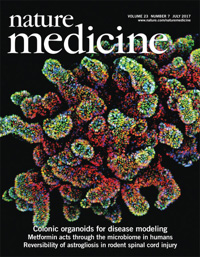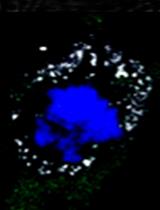- EN - English
- CN - 中文
TZA, a Sensitive Reporter Cell-based Assay to Accurately and Rapidly Quantify Inducible, Replication-competent Latent HIV-1 from Resting CD4+ T Cells
TZA, 一种基于敏感报告因子细胞学检测方法, 可用于准确快速量化静息CD4+ T细胞中可诱导的且复制能力强的潜伏HV-1
发布: 2019年05月20日第9卷第10期 DOI: 10.21769/BioProtoc.3232 浏览次数: 7728
评审: Emilie Besnard Mauricio MontanoAnonymous reviewer(s)
Abstract
The latent HIV-1 viral reservoir in resting CD4+ (rCD4+) T cells represents a major barrier to an HIV-1 cure. There is an ongoing effort to identify therapeutic approaches that will eliminate or reduce the size of this reservoir. However, clinical investigators lack an assay to determine whether or not a decrease in the latent reservoir has been achieved. Therefore, it is critical to develop assays that can reproducibly quantify the reservoir size and changes therein, in participant’s blood during a therapeutic trial. Quantification of the latent HIV viral reservoir requires a highly sensitive, cost-effective assay capable of measuring the low frequency of rCD4+ T cells carrying functional provirus. Preferably, such an assay should be such that it can be adopted for high throughput and could be adopted under conditions for use in large-scale clinical trials. While PCR-based assays are commonly used to quantify pro-viral DNA or intracellular RNA transcript, they cannot distinguish between replication-competent and defective proviruses. We have recently published a study where a reporter cell-based assay (termed TZA or TZM-bl based quantitative assay) was used to quantify inducible replication-competent latent HIV-1 in blood. This assay is more sensitive, cost-efficient, and faster than available technology, including the quantitative viral outgrowth assay or the Q-VOA. Using this assay, we show that the size of the inducible latent HIV-1 reservoir in virally suppressed participants on ART is approximately 70-fold larger than previous estimates. We describe here in detail an optimized method to quantitate latently infected cells using the TZA.
Keywords: TZM-bl cells (TZM-bl细胞)Background
The ability to quantitate the latent HIV-1 viral reservoir in a combination ART suppressed individual requires a highly sensitive assay with the ability to measure low frequency of rCD4+ cells carrying functional provirus. This assay should also be cost-effective and adaptable to be high throughput under different conditions and large-scale clinical applications. Currently, the frequency of the infected cells in latent condition is estimated using Poisson Statistics or by maximum likelihood analysis (Cillo et al., 2014; Rosenbloom et al., 2015). Most of these methods including the original Q-VOA method and its adaptations use limited dilution based techniques of PHA simulated CD4+ T cells which either measures HIV-1 protein or RNA via ELISA or quantitative PCR. These are all labor-intensive, time-consuming, expensive, and requires the frequent addition of activated CD4+ T cells as feeders (Chun et al., 1997; Finzi et al., 1999; Siliciano et al., 2003; Siliciano and Siliciano, 2005). There has also been a modified version of Q-VOA assay reported which implements MOLT-4/CCR5 (Laird et al., 2013) cell line for viral expansion instead of activated CD4+ T cells followed by RNA measurement but this is still more time consuming and labor intensive.
We recently reported the development of a sensitive TZM-bl cell-based assay (termed TZA) (Sanyal et al., 2017) to quantify the latent HIV-1 reservoir in blood. The present protocol consists of these main parts (i) isolation of resting T cells from the blood from HIV-1 positive and negative (control) donors (Steps A1-A4); (ii) activation of these resting CD4+ T cells using a strong LRA like Anti-CD3/CD28 (Siliciano and Siliciano, 2004) antibodies and (iii) washing, counting and plating these activated cells on a TZM-bl reporter cells to quantitate replication-competent HIV-1 by measuring β-gal expression to quantify virus induced. This assay utilizes the TZM-bl cell line, which stably expresses CD4, CCR5, and CXCR4, and carries an integrated copy of the β-galactosidase (β-gal) gene under the control of an HIV-1 long terminal repeat (HIV-1 LTR) promoter that allows for the detection of inducible replication-competent HIV-1. By using TZM-bl cells, quantification of replication-competent HIV-1 can be achieved with high sensitivity (Ananworanich and Mellors, 2015). TZA has been used to calculate fraction of inducible latent virus (fPVE) (Cillo et al., 2014; Sanyal et al., 2017). The level of fPVE can be used to screen various LRAs in-vitro as well as help monitor their in-vivo efficacy especially during clinical trials. This assay reveals that the viral reservoir is likely much larger than previously predicted and estimated which can impact the ongoing therapeutic approaches to eradicate HIV-1.
This assay can be adapted and automated to a 384-well format further down the line to enable an efficient screening platform, which will be capable of handling multiple samples simultaneously. This will make it a high-throughput assay system. In addition, because of the low cell requirement in this system, the TZA may also be useful for quantification of replication-competent HIV-1 in the pediatric population as well as estimation of the reservoir in tissues. We are presently developing a protocol for determining the reservoir size in tissues using this assay.
Materials and Reagents
- Pipette tips
- 15 ml centrifuge tubes (Fisherbrand, catalog number: 07-200-886)
- 50 ml centrifuge tubes (Fisherbrand, catalog number: 0553913)
- Tissue culture plates, 24-well transparent (Falcon, catalog number: 353047)
- White, 96-well plates, sterile with white lids (PerkinElmer, catalog number: 6005181)
- EDTA tubes purple tops for blood collection: Vacutainer brand sterile (BD, catalog number: 366643)
- CryoTubeTM vials for freezing cells (Thermo Fischer Scientific, catalog numbers: 153779, 202209, 363401)
- Tissue culture plates, 48-well transparent (Falcon, catalog number: 353078)
- 5 ml round-bottom polystyrene tubes (Corning, Falcon®, catalog number: 352054)
- TZM-bl cells (NIH AIDS Reagent program, catalog number: 8129)
- Animal serum complex (Gemini Bio Products, Fetal PlexTM, catalog number: 100-602), storage in a -18 °C freezer before opening bottle and then store at 4 °C for subsequent use
- DMSO (Life Technologies Corp, catalog number: 20688)
- FBS (HyClone, catalog number: SH3011803)
- Beta-Glo Assay System (Promega, catalog number: E4780), storage in a -18 °C freezer
- Custom ordered resting CD4+ T cells negative selection kit (Stemcell Technologies, catalog number: 19309VK) with EasySep D Magnetic Particles (Stemcell Technologies, catalog number: 19250), storage at 4 °C
- DynabeadsTM Human T-Activator CD3/CD28 (Thermo Fischer Scientific, GibcoTM, catalog number: 11131D)
- Clinical grade Human Recombinant Interleukin-2: IL-2 Powder 22 MU VIAL (65483011607), storage in a -18 °C freezer where MU stands for medical units
Note: Alternatively, human recombinant IL-2 can be purchased from Life Technologies Corp, catalog number: PHC-0023. - Human Recombinant Interleukin-7: IL-7 Premium grade (Miltenyi Biotec, catalog number: 130-095-361), storage in a -18 °C freezer
- Efaviranz (EFV) (Cayman Chemical, catalog number: 14412), need to be re-suspended in IMDM media and diluted according to need of the experimental procedure
- Flow Monoclonal Antibodies
Note: You will use 5 μl of each antibody for staining. Use simple Flow staining protocol for staining the cells. This is just done to check for the purity of the resting T cells. Resting T cells are CD25-/CD69-/HLADR- cells.- Mouse Anti-human CD4-AF700 (BD Biosciences, catalog number: 557922)
- Mouse Anti-human CD3-V450 (BD Biosciences, catalog number: 560365)
- Mouse Anti-human CD25-APC (BD Biosciences, catalog number: 340939)
- Mouse Anti-human CD69-FITC (BD Biosciences, catalog number: 555530)
- Mouse Anti-human HLADR-PE (BD Biosciences, catalog number: 347367)
- Mouse Anti-human CD279-PeCy7 (BD Biosciences, catalog number: 561272)
Note: Isotype controls are used at the same concentration as the specific antibody. So, dilutions have to be determined according to the concentration of the matched antibody.- PE-CyTM 7 Mouse IgG1, κ Isotype Control (BD Biosciences, catalog number: 557646)
- FITC Mouse IgG1, κ Isotype Control (BD Biosciences, catalog number: 556649)
- V450 Mouse IgG1, κ Isotype Control (BD Biosciences, catalog number: 561504)
- Alexa Fluor® 700 Mouse IgG1, κ Isotype Control (BD Biosciences, catalog number: 557882)
- APC-H7 Mouse IgG1, κ Isotype Control (BD Biosciences, catalog number: 561427)
- PE Mouse IgG2a, κ Isotype Control (BD Biosciences, catalog number: 558595)
- Dye-eFluor 506 (Invitrogen, catalog number: 65-0866-14)
- DPBS (1x), Dulbecco’s Phosphate-Buffered Saline (Corning Cellgro, catalog number: 21-031-CV), store at 4 °C for use after opening bottle
- Dry Ice
- HBSS (1x), Hanks Balanced Salt Solution (Thermo Fischer Scientific, GibcoTM, catalog number: 141775-095), store at 4 °C for use after opening bottle
- IMDM (1x) (Thermo Fischer Scientific, GibcoTM, catalog number: 12440-053), store at 4 °C for use after opening bottle
- Lymphocyte separation medium (Corning, catalog number: 25-072-CV), store at 4 °C for use after opening bottle
- Penicillin/Streptomycin (Thermo Fischer Scientific, GibcoTM, catalog number: 15140-122), store at -18 °C freezer before opening bottle and then store at 4 °C for subsequent use
- RPMI 1640 (1x) with L-glutamine and 25 mM HEPES (Corning Cellgro, catalog number: 10-041-CV)
- 0.05% Trypsin EDTA (1x) (Thermo Fischer Scientific, GibcoTM, catalog number: 25300-120), store at -20 °C freezer before opening bottle and then store at 4 °C for subsequent use
- RoboSepTM Buffer (Stemcell Technologies, catalog number: 20104)
- Formalin
- 10% RPMI (see Recipes)
- 10% IMDM (see Recipes)
Note: This procedure can be done in a BSL2+ lab following safety procedures involving wearing a closed lab coat and double gloves. The blood and processing should all be done in a bio-safety hood with proper airflow.
Equipment
- Tissue culture flask vented caps, 70 ml (Falcon, catalog number: 353109)
- Tissue culture flask vented caps, 250 ml (Falcon, catalog number: 353110)
- Pipettes
- Rocker
- Incubator (Thermo Electron Corporation, NAPCO SERIES 8000 WJ, CO2 Incubator)
- Centrifuge: Sorvall Legend RT+ Centrifuge (Thermo Scientific)
- Freezer
- Luminometer (Promega GloMax Navigator, GM2000)
- LN2 freezer
- Magnets (Stem Cell Technologies, catalog number: 96290)
- Light Microscope
- 4 °C refrigerator
- Flow cytometer (BD, model: LSR II)
- Water Bath (Fisher Scientific, model: 2223)
- Haemocytometer 0.100 mm deep (Hausser Scientific)
Software
- FlowJo software (Tree Star)
- BD FACSDivaTM software (BD Biosciences)
- IUPMStats v1.0 Infection Frequency Calculator (Online) http://silicianolab.johnshopkins.edu/
- Microsoft Excel
Procedure
文章信息
版权信息
© 2019 The Authors; exclusive licensee Bio-protocol LLC.
如何引用
Sanyal, A., Rangachar, V. S. and Gupta, P. (2019). TZA, a Sensitive Reporter Cell-based Assay to Accurately and Rapidly Quantify Inducible, Replication-competent Latent HIV-1 from Resting CD4+ T Cells. Bio-protocol 9(10): e3232. DOI: 10.21769/BioProtoc.3232.
分类
免疫学 > 免疫细胞分离 > 淋巴细胞
微生物学 > 微生物细胞生物学 > 基于细胞的分析方法 > 报告基因实验
细胞生物学 > 细胞分离和培养 > 细胞分离
您对这篇实验方法有问题吗?
在此处发布您的问题,我们将邀请本文作者来回答。同时,我们会将您的问题发布到Bio-protocol Exchange,以便寻求社区成员的帮助。
Share
Bluesky
X
Copy link













